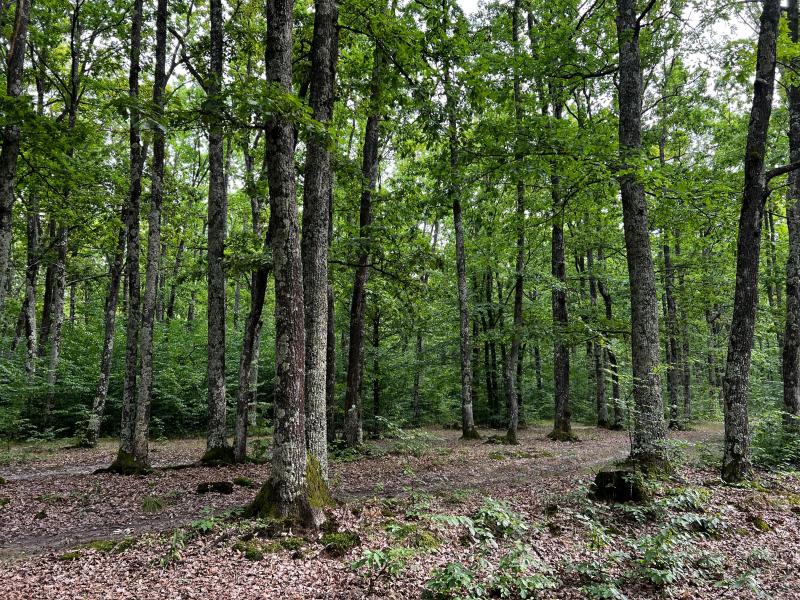Forest management company will restore forests to enhance biodiversity and ecosystem health by implementing a new approach to sustainable forestry in Romania
Romania has one of the largest areas of relatively untouched forests in Europe, which are considered key areas for conserving biodiversity. Sustainable forestry plays a crucial role in maintaining these valuable ecosystems, protecting endangered species and supporting rural livelihoods.
Sustainable forest management ensures the long-term ecological, social and economic viability of forests. In short, it involves the responsible and balanced use of forest resources while maintaining the integrity of the local ecosystems. This approach focuses on conserving biodiversity, protecting water resources, promoting the regrowth and renewal of forests, thus mitigating the impact of climate change and enhancing resilience of ecosystems. It also involves local communities and other groups in decision-making processes and recognises their rights and concerns.
In October 2022, the European Investment Bank loaned €9.5 million to the SLB Group to implement sustainable forest management principles in Romania, by promoting continuous cover forestry, natural regeneration, biodiversity conservation, and forest certification standards. The project focuses on Romania’s less developed regions, supporting employment and economic growth in remote rural areas like of Suceava, Botosani, Buzau and Dambovita counties.
The SLB Group is a French timber trading and forest management firm founded in 1991. The group expanded to Romania in 2007 and now sustainably manages over 8 000 hectares of forests in the country.
“Forests are a renewable resource that we must take care of,” says Florent Marcel, forestry director of SLB Group in Romania. He added that the EIB backed project is helping the company to analyse how forests develop in areas set aside for conservation purposes with no timber removals and to better manage degraded forest areas like those affected by wind damages or pest outbreaks through reforestation with native and more resilient species to climate change, and by promoting natural regeneration.
Establishing best practice guidelines and enhancing ecosystems’ resilience
The sustainable forestry in Romania aims to strike a balance between timber production and conservation of ecosystems, ensuring that forests are managed in a way that provides economic benefits while maintaining the ecological functions and social and amenity values of the forests, including flood control, protection against soil erosion and landslides, and recreational activities. Trees and their root systems sequester and store carbon, and harvested wood products offer long-term carbon storage.
“In our forest portfolio we have demarcated some conservation areas where absolutely nothing will ever happen,” Marcel says.

Forest in Romania
The forests managed by the SLB Group adhere to continuous-cover forestry guidelines, promoting the natural regeneration and diversification of trees. This approach maintains continuous tree canopy cover -a certain density of trees even during harvesting- over long periods of time, which protects soils and water streams. The SLB group’s forest operations focus on enhancing productivity and healthy growth of forest ecosystems, while conserving important wildlife habitats. The company uses forestry equipment with a low environmental footprint to reduce damage to forests and to protect the soil and water streams.
The group’s approach to sustainable forestry focuses on the ecosystem, recognising and valuing the multiple benefits that forests provide beyond timber. Regulating water flows on the long-term, eco-tourism and products like mushrooms, berries and medical plants are a few examples. Forests also offer unique investment possibilities, such as partnerships with companies interested in offsetting their carbon footprint.
The group relies on technology and innovation to better manage its forests. Remote sensing, drones and geographic information systems can improve monitoring and management of forests. Precision forestry, which optimises harvesting, and sustainable logging practices can help companies minimise their environmental impact.
Forestry business models
SLB’s practices could be used as a model for other sustainable forestry projects in Romania. Some potential business models include:
- Creating services that recognise and value the multiple benefits that forests provide beyond timber. This would leverage the concept of ecosystem services and could include promoting carbon sequestration, water regulation, eco-tourism and non-timber products such as medicinal plants.
- Establishing collaborations with local communities and NGOs, which would enable projects to benefit from these groups inherent knowledge of forest management. This could include community-based forest management schemes, sustainable agroforestry projects and ecotourism initiatives that provide local economic opportunities.
- Implement restorative and regenerative practices that would emphasize restoring degraded forests and adopting regenerative practices that enhance biodiversity and ecosystem health. This could involve reforestation initiatives, promoting natural forest regeneration, and implementing sustainable land-use practices to improve soil quality and watershed management.
Sustainable forestry makes a lot of economic sense. It promotes sound environmental practices, contributing to climate change mitigation and adaptation, biodiversity conservation and to diversifying local economies by providing job opportunities for rural communities that last well into the future.
EIB financing provides the much-needed support to the sector, promoting the adoption of sustainable forest management practices and certification standards, fostering restoration and rehabilitation of degraded lands, and encouraging partnerships and collaboration among stakeholders in the forestry sector.
The Bank’s technical and financial support to forestry projects such as SLB’s operation in Romania showcases the commercial viability and market demand for sustainable forest-based products and services.
